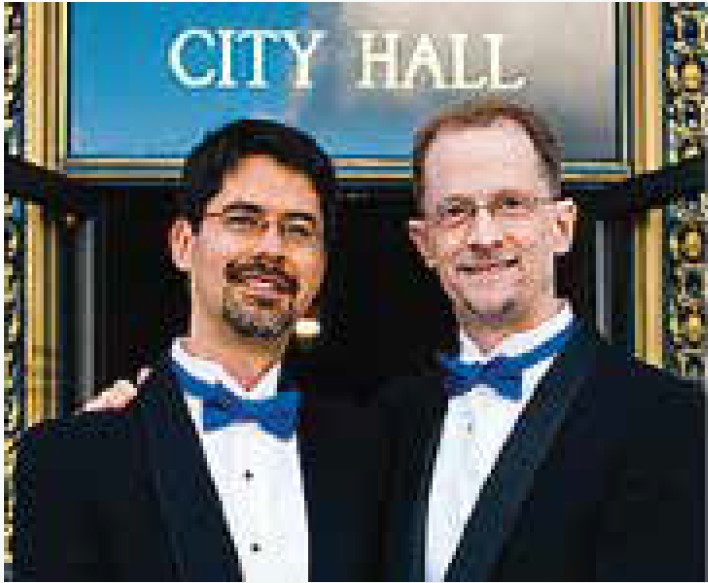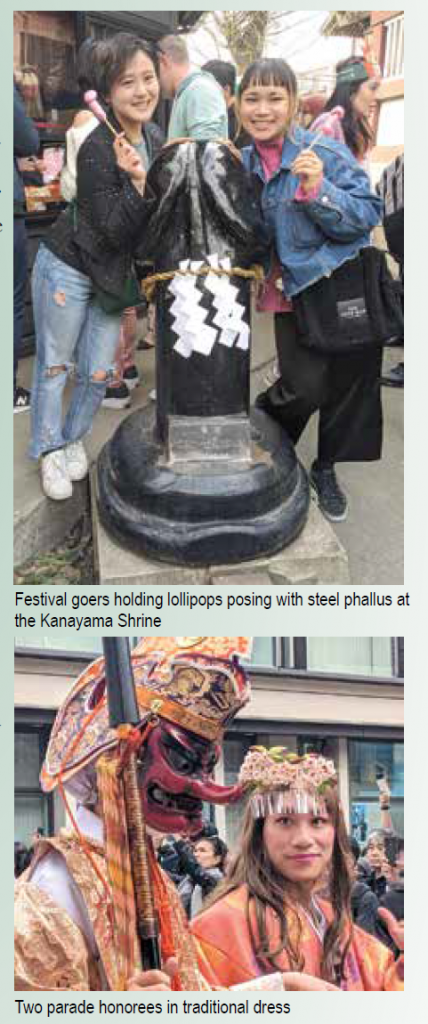
By John Lewis–
When most Americans hear the word “Kawasaki,” they likely think of the renowned motorcycle company, with its famous advertising slogan: “Let the Good Times Roll.” But every year on the first Sunday in April in the Japanese city of Kawasaki, tens of thousands of people from Japan and around the world give new meaning to the phrase when they come together to celebrate the Shinto festival Kanamara Matsuri, also known as the “Festival of the Steel Phallus”—or simply the Penis Festival!

I was lucky to be able to attend this unabashed and uninhibited celebration of sexuality (in particular the male sex organ) a couple of weeks ago. It was delightful. Absolutely everyone was welcome, and people of all ages and from all walks of life came. Indeed, an announcer at the beginning of the event explicitly proclaimed over the loudspeaker that all genders were welcome at the festival.
Steeped in tradition, yet thoroughly modern; both solemn and irreverent; and powerfully primal, while uproariously funny—the festival is devoted to celebrating and protecting all that is good and sacred in sexuality and to promoting health, safety, and well-being, all in an atmosphere of pure joy, free of shame.

The festival has ancient roots, which purportedly lie in the legend of a demon spirit who possessed a woman, hid inside her vagina, and then bit off her husband’s penis when he attempted to have sex with her. A clever blacksmith created an iron phallus to trick the demon. When the demon chomped down on it, its teeth cracked to pieces and it quickly fled, never to be seen again.
The ancient Kanayama Shinto Shrine, where the festival is based, enshrines a large iron phallus and multiple smaller ones, and is dedicated to fertility, ease in childbirth, harmonious marital relationships, and protection from sexually transmitted diseases. Sex workers have traditionally sought support and protection at the shrine. Today, proceeds from the festival are reported to go to HIV/AIDS research.
The main attraction of the festival is the parade, which began this year, as always, when an old Shinto priest, dressed in beautiful and colorful traditional regalia, reverentially stepped out from the shrine gate, followed by a few selected honorees apparently dressed as the demon and other characters from the legend. The crowd then roared with excitement when three large mikoshi, or portable shrines containing phalluses, emerged one after the other from the shrine, carried on the shoulders of numerous devotees, who then paraded them through the streets of the surrounding neighborhoods.

Two of the mikoshi are traditional: the first is an erect iron phallus attached to a long, heavy wood board, and the second is an iron phallus standing in front of a thick portion of a pine tree trunk, housed in a traditionally decorated miniature Shinto shrine. The third and most flashy is known as “Elizabeth Mikoshi” and sports an enormous pink phallus. It is carried throughout the parade by dynamic drag queens.
The indefatigable parade marchers enthusiastically wound through the streets for hours. They often chanted exuberantly, sometimes did dances with the phallic shrines, and at other times played teeter-totter with them. On some occasions, certain members of a shrine contingent would push down hard on the wood frame supporting the phallus, while their comrades below were tasked with ensuring it didn’t touch the ground. The act appeared to harness energy from within them as they then continued along the parade route in ecstatic exuberance. Their exhilaration was infectious.
A well-attended penis festival took place on the shrine grounds after the parade, with colorful phallic candles, bright pink penis headdresses, and other phallic-shaped paraphernalia for sale. Many devotees obtained ritual stamps with original calligraphy and phallic artwork in their goshuincho or stamp/seal books in which they record their pilgrimages to various shrines and temples across the country. Other attendees hung traditional ema or small wood plaques on which they wrote their prayers and wishes for smooth childbirth and healthy babies. The Japanese feminist artist Vert created a colorfully expressionist painting of a climaxing phallus. One of her works is part of the permanent collection of the shrine.
A striking element of the festival was its liberating matter-of-factness. Parents posed for selfies with their small children licking phallic lollipops in front of large phallic statutes. No one batted an eye. Nor were there any protests or controversy surrounding the festival in refreshing contrast to what is going on in the U.S. in states like Florida and Tennessee, among others. It was all good clean fun. I left feeling renewed, refreshed, and full of joy. Indeed, Kawasaki let the good times roll!
John Lewis and Stuart Gaffney, together for over three decades, were plaintiffs in the California case for equal marriage rights decided by the California Supreme Court in 2008. Their leadership in the grassroots organization Marriage Equality USA contributed in 2015 to making same-sex marriage legal nationwide.
626 and Beyond
Published on April 20, 2023
Recent Comments